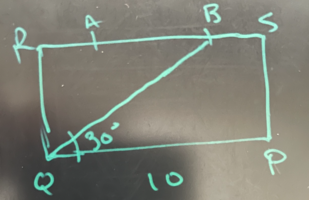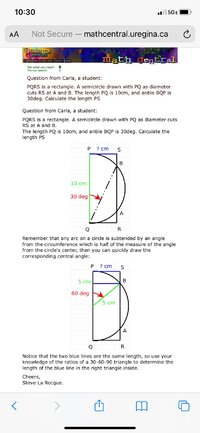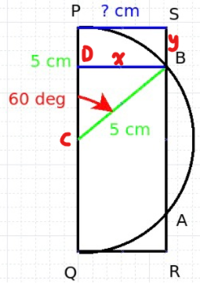I solved this exercise problem yesterday. It took me a long while to solve it. Today I tried again and I have no idea how I solved it. I erased my solution from my whiteboard.
Here is the exercise: PQRS is a rectangle. A semicircle drawn with PQ as diameter cuts RS at A and B. The length PQ is 10 cm, and angle BQP is 30°. Calculate the length of PS.
I'm guessing my first problem may be not accurately drawing the diagram. Below is the diagram I'm starting with as it seems to make the most sense. PS is equal to QR so given that I have a triangle with base QR I would try to find the length of QR. Since BQP is 30° BQR should be 60°. And so [imath]QR = \frac{RB}{tan60°}[/imath] or [imath]QR = \frac{10-BS}{tan60°}[/imath]
Thanks in advance.

Here is the exercise: PQRS is a rectangle. A semicircle drawn with PQ as diameter cuts RS at A and B. The length PQ is 10 cm, and angle BQP is 30°. Calculate the length of PS.
I'm guessing my first problem may be not accurately drawing the diagram. Below is the diagram I'm starting with as it seems to make the most sense. PS is equal to QR so given that I have a triangle with base QR I would try to find the length of QR. Since BQP is 30° BQR should be 60°. And so [imath]QR = \frac{RB}{tan60°}[/imath] or [imath]QR = \frac{10-BS}{tan60°}[/imath]
Thanks in advance.





